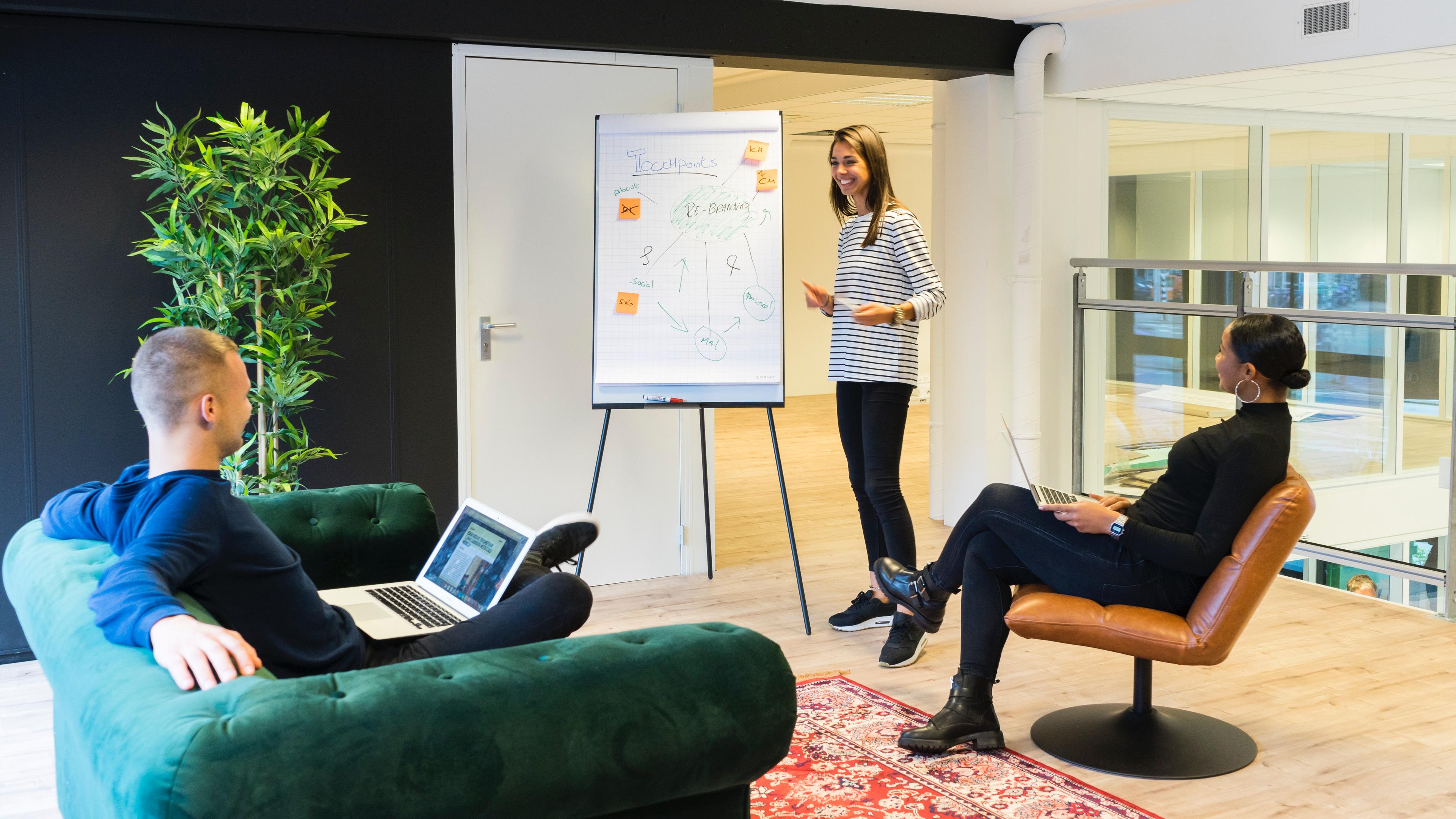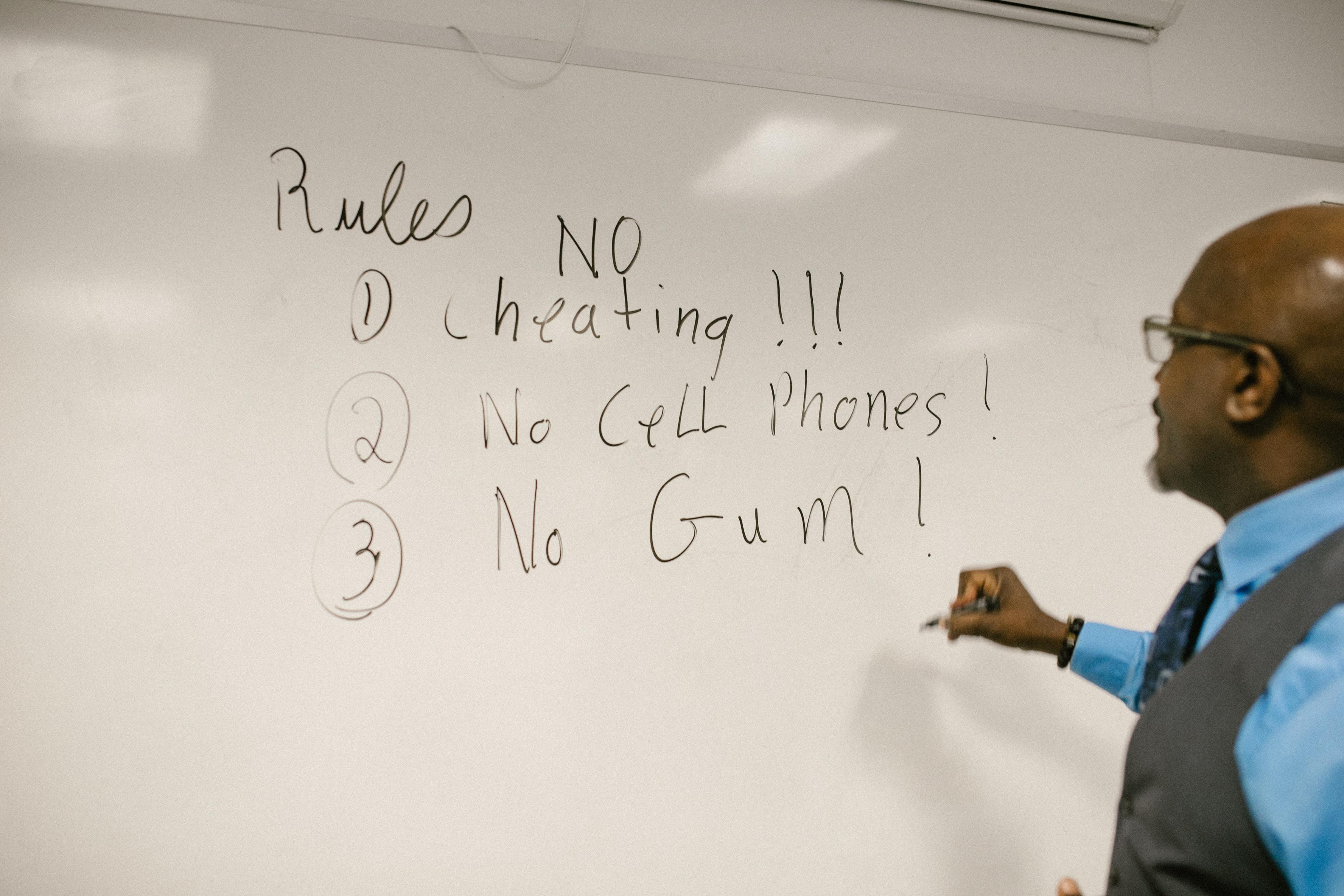12 Ways to Improve Your Work Meetings & Presentations
Our definitive list to improving meeting efficiency

Improving your meetings and presentations hasn't exactly been the number one priority on people's minds given the continuing pandemic. Since COVID-19, let's face it, meetings have gone a stray. We have become too accustomed to the stale screen and lack lustre audio to match. Meetings via Microsoft Teams, Zoom & general video conferencing will never replace the real thing, so we have created a guide to spice up your business meetings as you and your team return to the office.
1. Start with a plan!
Meetings are for a reason, so start with this. Meetings should be structured around a subject or goal. So set some objectives before the meeting begins. The good thing about meetings is your plan only has to be as detailed as the actual meeting itself. So if you are there to discuss an internal work party, there really isn't a need to plan it to death. Simple talking points or action points are the basis. Share information before the meeting itself, so you can save yourself unnecessary and irrelevant diversions to the business itself. Remind yourself this is a time-saving exercise to help you make meetings more efficient.
2. Make sure the meeting room is prepared in advance.
There is nothing worse than arriving to a meeting and finding out there are no pens, flipchart, water or other essentials necessary to getting business done. So try your best to make sure all these items are available before. Don's neglect the small things. Normal pens and notebooks are often forgotten in and amongst the presentation materials. Luckily at Tribes Inspiring Workplaces, all these items and more come as standard with a meeting room booking including free tea and coffee! This is another way to increase the efficiency of your meetings while you still can.
3. Bring your materials.
A successful meeting doesn't end with just having pens and paper, you need to be prepared for the presentation itself. So make sure you have relevant statistics, minutes from your last meeting, PowerPoint slides if necessary and general documents which may need shared between participants. Leaving the room to print is a sure-fire way to break concentration and lose the attention of the room.
4. Don't leave the room unless completely necessary.
As a speaker the best way you can lose the attention and focus of participants is by leaving the room to tend to some other business. Think back to school days when the teacher would leave the room for 5 minutes to grab resources, do you think students sat silently awaiting the return of the teacher? Your focus needs to be with those in attendance in the same way that their attention needs to be with you! So try to establish this connection early on and remind participants that you are there for their benefit.
5. If you are presenting, then set some rules.
This one comes straight from our own training. Creating some authority in the room (especially for training purposes) is essential to getting the most out of company time. Creating some rules in the beginning ultimately assists focus and structure throughout. Below is a list of possible considerations:
- Show up on time
- Respect the agenda set
- Set clear break times for participants if your session is long
- Let everyone participate
- No mobile phones
- Private conversations can wait
6. Encourage energy and engagement.
We all need to be coaxed. Early morning Monday meetings are a prime example. As participants drag themselves into the room, you'll find engagement is at a low point. This can be turned around, but it involves encouragement from the speaker. There are a few ways to overcome your tired audience.
We suggest bringing your own energy from the first minute. Think of it like laughter, it's often infectious and can be brought out of people. If you arrive with the same 'I don't like Mondays' mentality, then this will only rub off on your participants, who are already understandably susceptible to daydreaming. Let's aim for the reverse. Be enthusiastic. Smile. Challenge and encourage engagement. Question those in attendance and appreciate their engagement by complimenting their contributions. Participation and engagement isn't exactly encouraged during meetings via video, with the more cunning amongst us opting out of joining in early on by declaring their mic is broken. Others got so fed up during the initial lockdowns that they simply placed a looped video of themselves in frame, so they could continue with other things they felt were a better use of their time. This leads us nicely to our next point.
7. Get up and move around!
As we previously mentioned, meetings via video have become very static and arguably more boring than the conventional face to face meetings we were all accustomed to. Part of this is because it takes such little effort to join in. Within a few clicks we are in the meeting. So how do we overcome this when returning to the office? Well, start by getting participants up and moving where possible. For beating the Monday blues this is essential. Consider integrating a small team activity or icebreaker to get some energy into the room.
8. Give participants time to answer.
Groupthink is a real thing, and it can seriously skew real progress in meetings or training sessions. So make sure to try to get responses out of everyone in creative ways. If not, you run the risk of everyone lining up behind the same answer or the loudest speaker. A way of doing this could be allowing anonymous written answers. Carrying out quick polls or questionnaires is another great way to ensure everyone joins in. Keep in mind, more shy participants may take some more time to get fully involved, so try to break the ice and allow plenty of time for contributions.
9. Utilize PowerPoint to its full potential.
Too often, we see static PowerPoint presentations. We see blank white presentations where very little effort has been placed into basic design. We aren't saying this has to be a masterpiece. Often simple designs go further than overloading your presentation with colour and mad transitions. Find your happy medium and try putting yourself in the shoes of the meeting participants before even creating your next PowerPoint. If it doesn't inspire you, then how can you expect it to inspire anyone else?
An important consideration regarding PowerPoint: Yes, PowerPoint and other presentation software programs such as Keynote are important. Conveying lots of information in short spaces of time is an obvious advantage. But don't make your meetings or presentation solely centred around PowerPoint.
If you are still finding yourself stuck with how to get the most out of PowerPoint, follow the American Psychology Association's guide on what not to do.
10. Diversity is key.
Following on from our last point, I am sure you are starting to see a pattern. Diversifying your meetings is arguably the most essential thing to turning old boring meetings into inspiring presentations. Remember, there are various types of ways people learn more effectively. So if your main meetings are training sessions or even sales pitches, try to keep this in mind as it could make the difference. So what are the main ways people learn? We have listed a few types of learners or learning styles below for you to consider:
- Kinetic or physical learners
- Visual learners
- Auditory learners
- Solitary learners
- Logical or Analytical learners
So what's the best way to approach each type of learning style as a teacher, trainer or presenter? There are various resources for this which go into detail of each style. ViewSonic highlight 8 main learning styles and neatly bullet point how to get the most out of each style. Avado Learning cite a Guardian article noting that learners won't fit neatly into one box, so it will often take a diverse mix of approaches to cover all bases.
11. Consider your surroundings.
For efficient meetings, there are also environmental considerations that need taken into account. Plain white walls aren't exactly inspiring. Blank tables in a cramped room also don't inspire the most out of meetings. Cold spaces are also a drain on energy and keep focus elsewhere. Lighting can make a huge difference too. Dark, dreary meeting rooms often make it impossible to focus. We encourage all businesses to pick the most inspiring meeting rooms they can find to conduct their important business. This massively contributes to progress and ends up subconsciously setting the tone moving forward.
12. Plan your lunches beforehand.
It's not uncommon for meetings to be booked across a lunchtime. So firstly, make sure you account for this. Check what availability there is in the area or the building, and if possible have lunch prepared by a catering company. This is a great time to gain much needed energy and to reward those in attendance with some screen time when reunited with their devices. Make sure to note dietary requirements and allergies with those in attendance. A sure fire way to kill the mood of a really good meeting is to serve terrible food. If you are getting food ordered in, seek brain food or at the very least, fresh food. We know people in meetings may be happier eating some fast food, but realistically this will only negatively effect the later stages of your meeting. Use this as an opportunity to thank those in attendance for all their hard work. Get creative and consider a platter or buffet to keep the energy high.
We hope this has helped give you some clues on how to improve your meetings as you return to the office. Meetings can be a great way to create first impressions or make leaps forward as a business so take these tips and tricks with you as you and your team continue to grow, expand and create.












